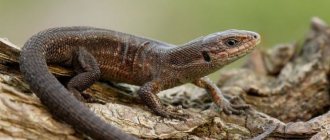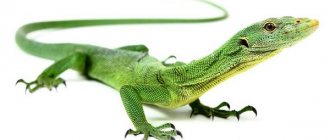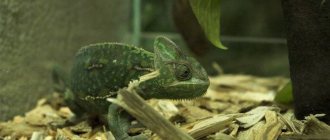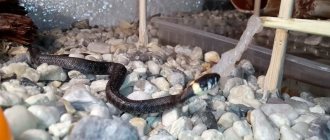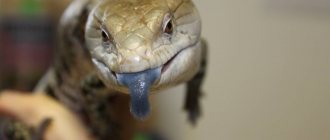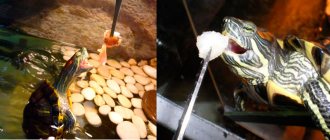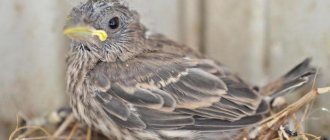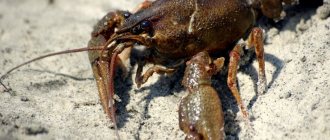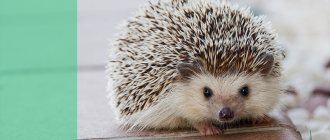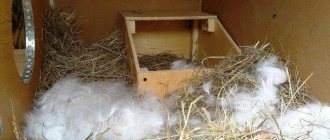LIZARDS (Lacertilia, Sauria), suborder of reptiles.
As a rule, small animals with well-developed limbs, the closest relatives of snakes. Together they form a separate evolutionary lineage of reptiles. The main distinguishing feature of its representatives is the paired copulatory organs of the male (hemipenises), located on both sides of the anus at the base of the tail. These are tubular formations that can turn out or retract inward like the fingers of a glove. The inverted hemipenises serve for internal fertilization of the female during mating. Also on topic:
REPTIENTS
Lizards and snakes form the order of squamates - Squamata (from the Latin squama - scales, as a sign that the body of these reptiles is covered with small scales). One of the recurring trends in the evolution of its representatives was the reduction or loss of limbs. Snakes, one of the lineages of squamates with reduced limbs, make up the suborder Serpentes. The suborder of lizards comprises several highly divergent evolutionary lineages. For simplicity, we can say that “lizards” are all scaly animals, except snakes.
Also on topic:
SNAKES
Most lizards have two pairs of limbs, visible openings of the external auditory canal, and a movable eyelid; but some of them lack these signs (like all snakes). Therefore, it is more reliable to focus on the features of the internal structure. For example, all lizards, even legless ones, retain at least rudiments of the sternum and shoulder girdle (the skeletal support of the forelimbs); Both of these are completely absent in snakes.
Distribution and some species.
Also on topic:
COMPARATIVE ANATOMY
Lizards are widespread throughout the world. Absent from Antarctica, they are found from the southern tip of other continents to southern Canada in North America and to the Arctic Circle in that part of Europe where the climate is moderated by warm ocean currents. Lizards are found from elevations below sea level, such as Death Valley in California, to 5500 m above sea level in the Himalayas.
Known approx. 3800 of their modern species. The smallest of them is the round-toed gecko (Sphaerodactylus elegans) from the West Indies, only 33 mm long and weighing about 1 g, and the largest is the Komodo dragon (Varanus komodoensis) from Indonesia, which can reach 3 m in length and weighs 135 kg. Despite the widespread belief that many lizards are venomous, there are only two such species - the common lizard (Heloderma suspectum) from the southwestern United States and the related escorpion (H. horridum) from Mexico.
Lifestyle of a viviparous lizard in nature
Like other lacertids, the viviparous lizard is diurnal. The activity of the reptile largely depends on the temperature and humidity of the air. It is most active at a temperature of 15-20 ° C; with increasing temperature, activity decreases just as in cloudy and cool weather. At 30°C on the litter, lizards hide in burrows, and when the temperature drops to +10°C they stop their activity. In mid-summer, the daily cycle of the lizard is approximately as follows: from 21 pm to 7-8 am - sleep in the shelter; from 7-8 a.m. to 11 a.m. – warming up the body on the soil surface; from 11 to 16 hours is the period of highest activity; from 16:00 to 20:00 is a period of moderate activity.
Paleontological history.
The oldest fossil remains of lizards date back to the Late Jurassic (ca. 160 million years ago). Some of their extinct species were enormous in size. It is believed that Megalania, which lived in Australia in the Pleistocene (approx. 1 million years ago), reached a length of approx. 6 m; and the largest of the mosasaurs (a fossil family of long, slender fish-like aquatic lizards related to monitor lizards) is 11.5 m. Mosasaurs inhabited the coastal sea waters of various parts of the planet for ca. 85 million years ago. The closest modern relative of lizards and snakes is the rather large tuatara, or tuatara, from New Zealand.
Habitats
Where do lizards live? Lizards live on all continents, with the exception, of course, of Antarctica. In general, they love warm climates and can be found in forests, meadows, steppes, and deserts in any part of the world. They move well on any surface and cling tightly to them with their paws.
Interesting fact: rock lizards are excellent jumpers; the height of their jumps can sometimes reach up to 4 meters.
Appearance.
The background color of the back and sides of most lizards is green, brown, gray or black, often with a pattern in the form of longitudinal and transverse stripes or spots. Many species are able to change color or its brightness due to the dispersion and aggregation of pigment in special skin cells called melanophores.
The scales can be both small and large; they can be located close to each other (like tiles) or overlapping (like tiles). Sometimes they are transformed into spines or ridges. Some lizards, such as skinks, have bony plates called osteoderms inside their horny scales, which give the integument additional strength. All lizards molt periodically, shedding their outer layer of skin.
The limbs of lizards are designed differently, depending on the lifestyle of the species and the surface of the substrate on which it usually moves. In many climbing forms, such as anoles, geckos and some skinks, the lower surface of the fingers is expanded into a pad covered with setae - branched hair-like outgrowths of the outer layer of the skin. These bristles catch on the slightest irregularities in the substrate, which allows the animal to move along a vertical surface and even upside down.
Both the upper and lower jaws of lizards are equipped with teeth, and in some they are also located on the palatine bones (the roof of the oral cavity). The teeth are held on the jaws in two ways: acrodontally, almost completely fused with the bone, usually along its edge and not replaced, or pleurodontally - loosely attached to the inside of the bone and regularly replaced. Agamas, amphisbaenas and chameleons are the only modern lizards with acrodont teeth.
Organization of the terrarium
An exotic pet should only be kept in a terrarium. A lizard roaming freely around the house can get injured or burned.
The sizes and shapes of the terrarium can be any, but there is an unwritten rule: the height of the walls of the artificial dwelling must be equal to the length of the amphibian multiplied by 2. At a minimum. Let us remind you: lizards easily climb even a vertical wall.
The material for the terrarium can be ordinary glass (an old aquarium will do just fine), but it is better to make a lifting lid from wire mesh. In addition, small holes for ventilation need to be installed in the side walls.
There are options for a “house” made from an old bookshelf. In this case, one side wall and the lid of the improvised terrarium are also made of wire mesh.
It is recommended to cover the bottom with soil; Coarse sand, pebbles and even ordinary soil are perfect for this. The most popular among terrarium keepers are ordinary napkins, paper towels or toilet paper, which can be easily replaced when soiled.
For your agile pet, it would be a good idea to decorate the landscape with branches or tree stumps, snags, stone slides, and caves. The nimble lizard will definitely like this decor.
Sense organs.
The eyes of lizards are developed differently, depending on the species - from large and well-seeing in diurnal forms to small, degenerate and covered with scales in some burrowing taxa. Most have a movable scaly eyelid (lower eyelid only). Some medium-sized lizards have a transparent “window” on it. In a number of small species it occupies most or the entire area of the eyelid, attached to the upper edge of the eye, so that it is constantly closed, but sees as if through glass. Such “glasses” are characteristic of most geckos, many skinks and some other lizards, whose gaze as a result is unblinking, like that of snakes. Lizards with a movable eyelid have a thin nictitating membrane, or third eyelid, underneath it. This is a transparent film that can move from side to side.
Many lizards have retained the parietal “third eye” characteristic of their ancestors, which is not capable of perceiving shape, but distinguishes between light and darkness. It is believed to be sensitive to ultraviolet radiation and helps regulate sun exposure as well as other behaviors.
Most lizards have a noticeable opening in the shallow external auditory canal, which ends in the eardrum. These reptiles perceive sound waves with a frequency of 400 to 1500 Hz. Some groups of lizards have lost their auditory opening: it is either covered with scales or has disappeared as a result of narrowing of the auditory canal and eardrum. In general, these “earless” forms can perceive sounds, but, as a rule, worse than the “eared” ones.
The Jacobson (vomeronasal) organ is a chemoreceptor structure located in the anterior part of the palate. It consists of a pair of chambers that open into the oral cavity with two small holes. With its help, lizards can determine the chemical composition of substances that enter their mouths and, more importantly, those in the air that fall on their protruding tongue. Its tip is brought to the Jacobson's organ, the animal “tastes” the air (for example, to the proximity of prey or danger) and reacts accordingly.
Reproduction.
Initially, lizards belong to oviparous animals, i.e. lay shell-covered eggs that develop for several weeks outside the mother's body before hatching. However, many groups of lizards have developed ovoviviparity. Their eggs are not covered with a shell, they remain in the female’s oviducts until embryonic development is completed, and the already “hatched” cubs are born. Only the widespread South American skinks of the genus Mabuya can be considered truly viviparous. Their tiny, yolkless eggs develop in the oviducts, likely receiving nutrition from the mother through the placenta. The placenta in lizards is a special temporary formation on the wall of the oviduct, in which the capillaries of the mother and the embryo come close enough to each other so that the latter receives oxygen and nutrients from her blood.
The number of eggs or young in a brood varies from one (in large iguanas) to 40–50. In several groups, for example, in most geckos, it is constant and equal to two, and in skinks and a number of American tropical geckos, there is always only one cub in the brood.
Enemies and methods of defense.
Lizards are attacked by almost all animals that can grab and defeat them. These are snakes, birds of prey, mammals and humans. Methods of defense against predators include morphological adaptations and special behavioral techniques. If you get too close to some lizards, they will take on a threatening pose. For example, the Australian frilled lizard (Chlamydosaurus kingii) suddenly opens its mouth and raises a wide, bright collar formed by a fold of skin on its neck. Obviously, the effect of surprise plays a role in scaring off enemies.
If many lizards are grabbed by the tail, they throw it away, leaving the enemy with a wriggling piece of debris that distracts his attention. This process, known as autotomy, is facilitated by the presence of a thin non-ossifying zone in the middle of all caudal vertebrae except those closest to the trunk. The tail is then regenerated.
